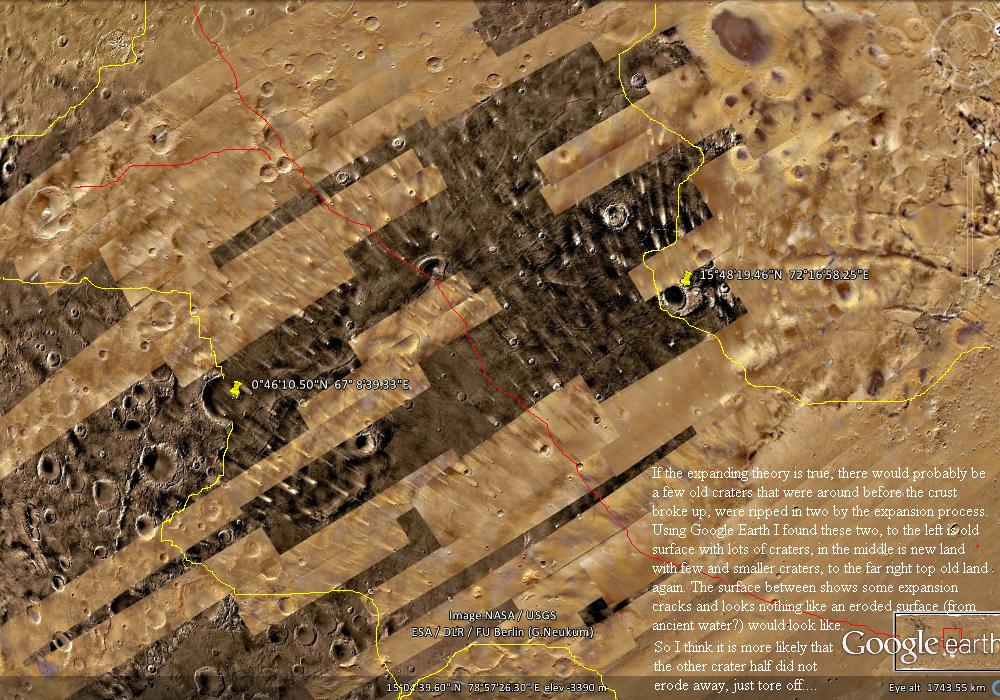Exploring visual proof for expanding planets
Tuesday, 8 May 2012
Exploring visual proof for expanding planets: Expanding Mars2
Exploring visual proof for expanding planets: Expanding Mars2: Stretched impact craters such as these only show up in new land areas (in expanding planet theory, new land is the land appearing while expa...
Expanding Mars2
Stretched
impact craters such as these only show up in new land areas (in expanding planet theory, new land is the land appearing while expansion takes place) – most likely not
due to any directional or angle effect from the incoming meteorite but due to
the land expanding after the impact, providing visual evidence in favour of
expanding planets. Erosion cannot stretch an originally round impact crater.
Pictures from google Mars...
Pictures from google Mars...
Expanding Mars?
I've just recently first seen some of the visual evidence
for an expanding earth and other planets. The visual evidence seems compelling
(search Neal Adams expanding) for both earth and other planets. Expanding
planets are considered pseudoscience by believers of the plate tectonics
theory. However if you believe in a theory you have departed from science to
become a believer. I don’t believe in expanding earth theory, I just explore
it since it might be true.
The mechanism for expanding planets seems to be the main gap
in theory; with some proposed theories such as 1. changing gravity constant -
which could be due to the expanding universe as space-time fabric is stretched
and becomes less dense?
2. hollow shell planets - some visual evidence seen in
rebound theories from comparing the shape of larger impact craters with smaller
impact craters. According to this theory these hollow planets formed due to the
spinning of matter (creating an outwards force vector) balancing the planets'
individual gravity effect. If you consider this impossible, just remember that
our solar system is in a similar balance with every planet balanced dynamically
with the outwards vector force of its orbit ellipse countering the gravitational
acceleration.
3.Others I don't know of....
In any case, my first picture shows some visual evidence
from Google Mars. If Mars was expanding, then there would probably be some old
craters that were around before the crust broke up, and some of those could be
ripped in two by the expansion process.
The only other explanation for half craters such as these
shown, would be erosion, of which we find no or little evidence in the areas
shown. The break is too clear and I cannot see valleys eroded in this area.
There are also cracks running parallel to the break from old to new land,
providing more visual evidence for expansion in these areas.
If you had a constant size planet with no major erosion, we
would expect the surface to be similar all around with approximately the same
number of impact sites everywhere (some gradual shift to and from the solar
system alignment accepted). But on Mars (and possibly other planets- will
investigate) there is evidence of old land (with many and larger impact sites)
and new land (with fewer and smaller impact sites).
Subscribe to:
Comments (Atom)


